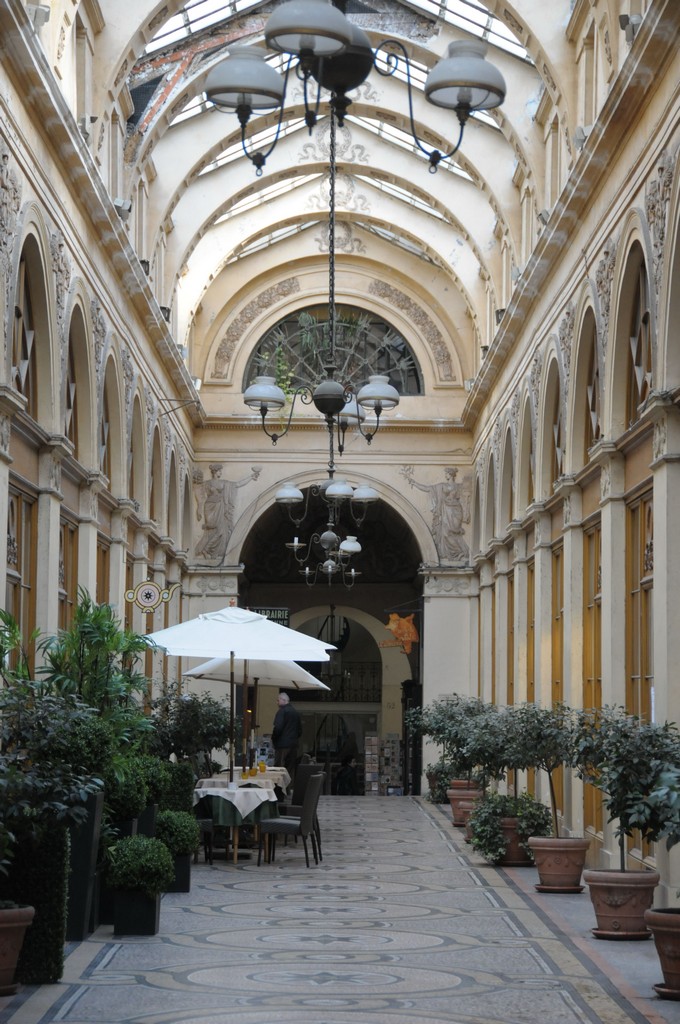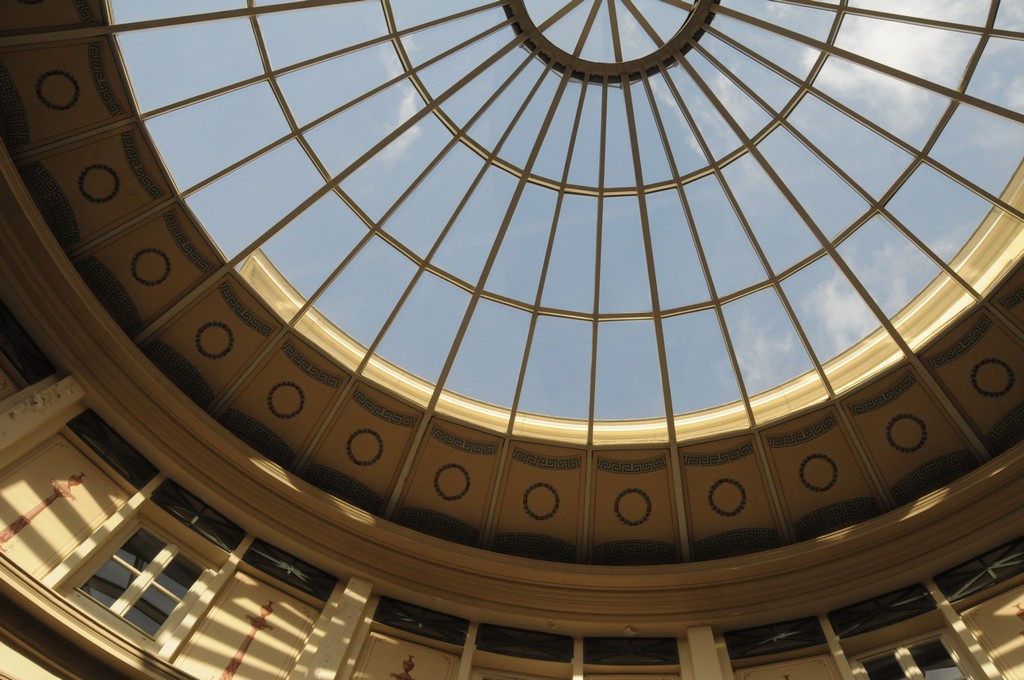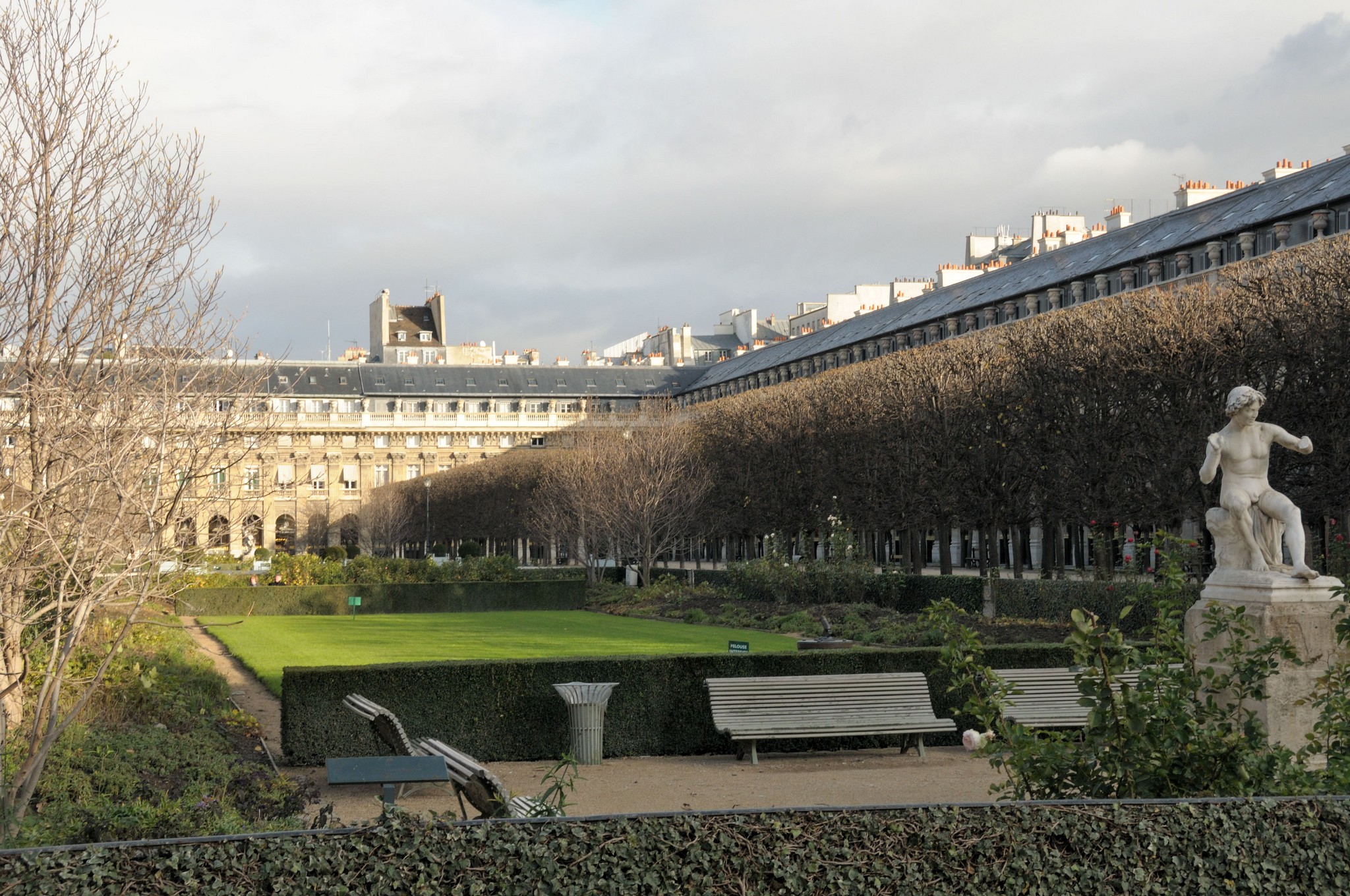
The garden and the galleries of the Palais-Royal
© Antonio Ca' Zorzi (2011)
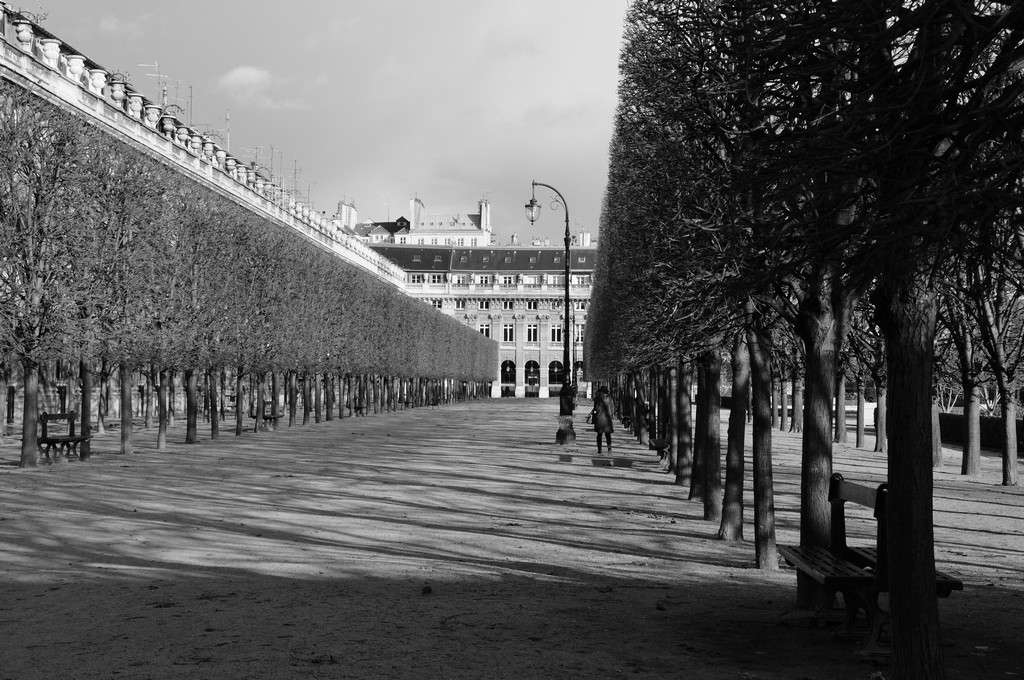
Garden path of the Palais-Royal in winter.
© Antonio Ca' Zorzi (2011)
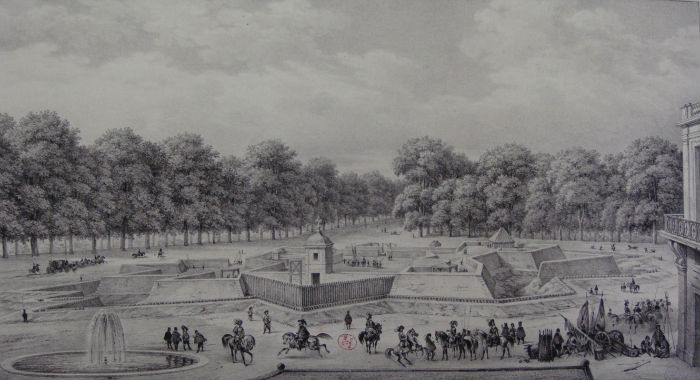
The garden was at one time the playground of Louis XIV. A miniature fortress was set-up in order for him to learn martial arts.
© Musée Carnavalet
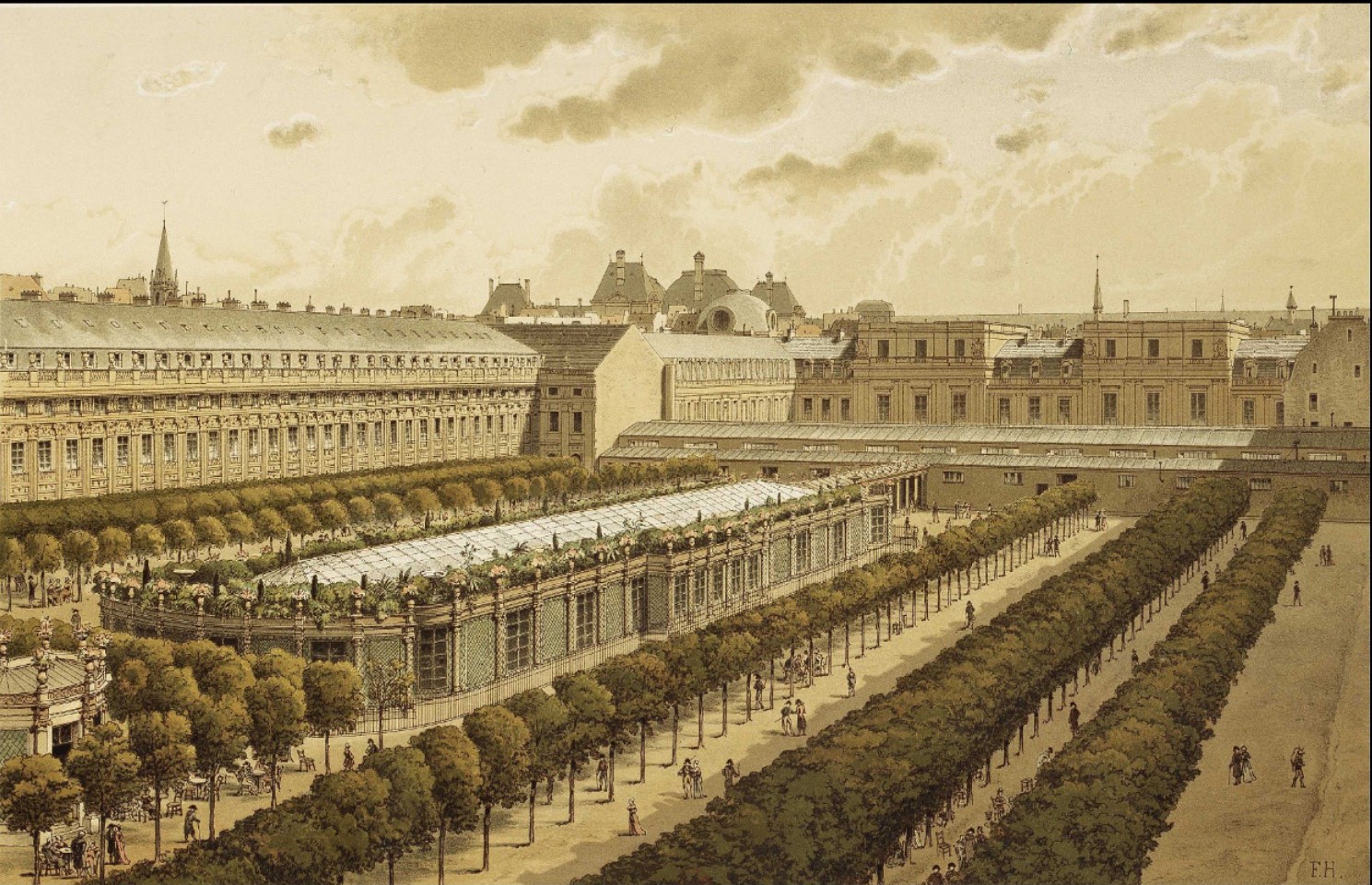
Cirque du Palais Royal vers 1794
Bibliothèque Nationale de France
The garden and the galleries of the Palais-Royal
The arcades surrounding the inner palace garden belong to the Valois, Montpensier and Beaujolais galleries, which were built in 1784 by Victor Louis, at the request of Louis-Philippe II, Duke of Orléans, the future Philippe-Égalité. Louis is also the architect of the Théâtre Français, which today houses the Comédie-Française. The three covered galleries represent a homogeneous unit, exuding the tranquility of a protected space, despite having been a very worldly place in the past, where all Paris hastened to see and to be seen. This architectural ensemble was inspired by the arcades of Piazza San Marco in Venice. The elegance of the place was intended to retain the public on site after leaving the theater, so they could continue spending in the many game rooms, restaurants, cafes and boutiques. The first reactions to enclosing and isolating the garden with the galleries were hostile, for building them required cutting down the old trees dating back to the time of Richelieu.
The police was not permitted to enter the palace. Thus, the garden became a favorite place for duels (banned by Louis XVI, but tolerated during the Revolution) and amorous encounters.
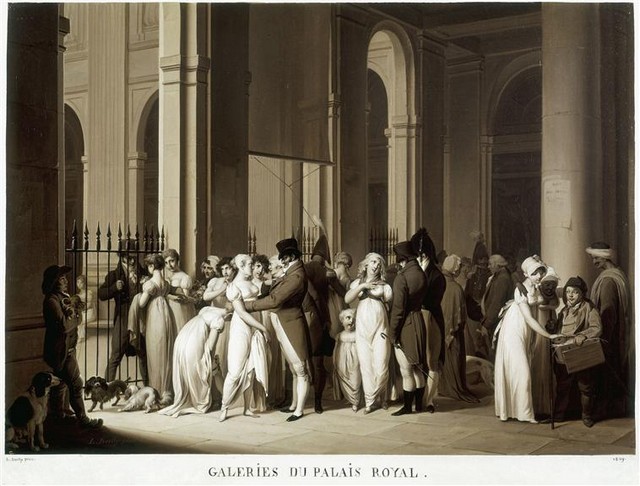
Prostitutes at the Palais-Royal.
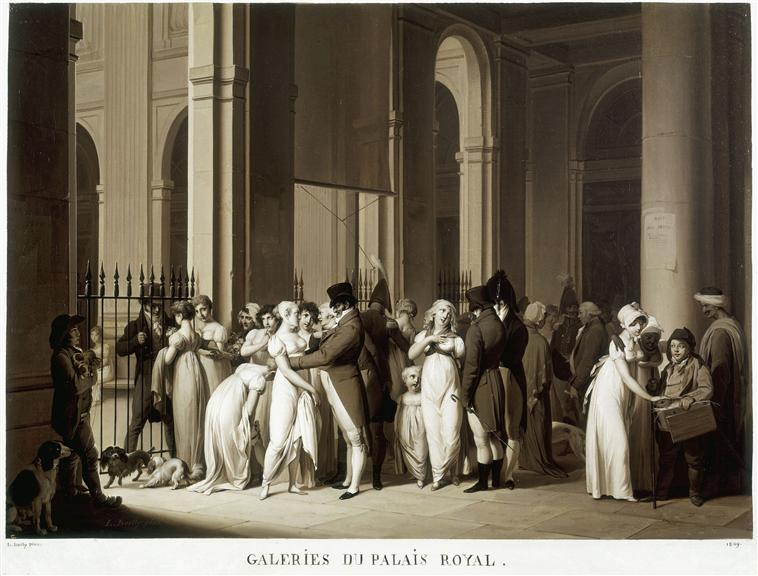
Louis-Léopold Boilly, The galleries of the Palais-Royal,
oil on canvas, 1809
Paris, Musée Carnavalet
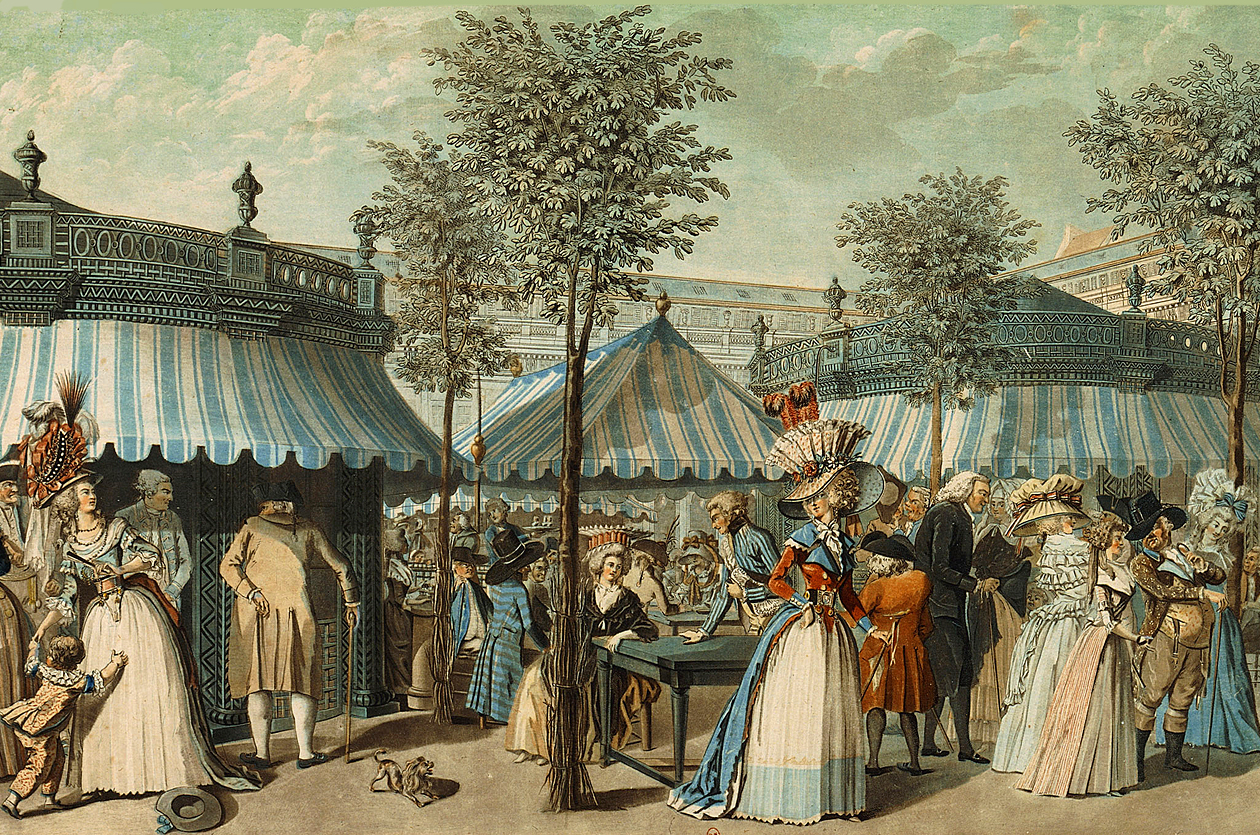
Louis Le Coeur, The Palais Royal Garden Walk,
etching, 1787
London, British Museum
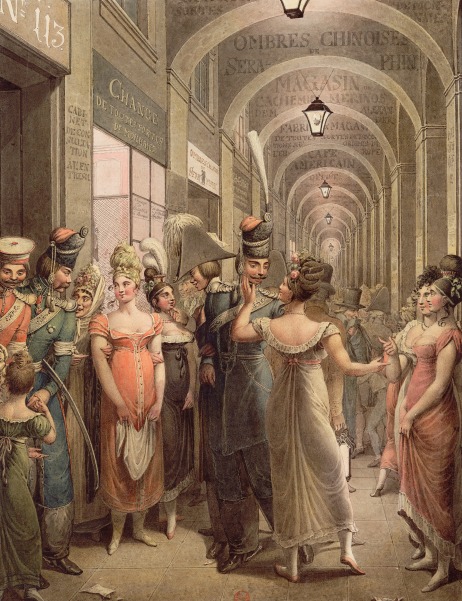
Palais-Royal, la sortie du 113, 1815,
Opiz, Georg-Emmanuel (1775-1841), Dessinateur
Bibliothèque nationale de France, Paris
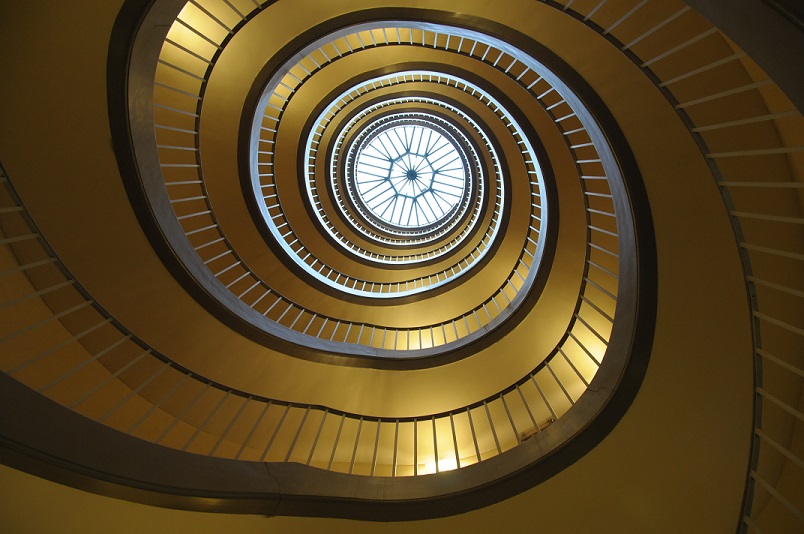
Banque France, Double helix stairs,
48 rue de Valois (and 33 rue Radziwill), Paris I°
Photo: Blue Lion (2011)
After the theater, gambling or dinner, the male public could extend the evenings with prostitutes who had their quarters conveniently nearby. Just outside the exit at the bottom of the garden, to the right, you can still see the remnants of one of these brothels on rue Radziwill, at the entrance of the first building on the right (presently the Bank of France). A double spiral staircase allowed the aristocrats to avoid crossing each other while going up or down from the rooms.
The garden opens onto a lawn surrounded by flowers, where the Small Cannon of the Palais Royal is located.
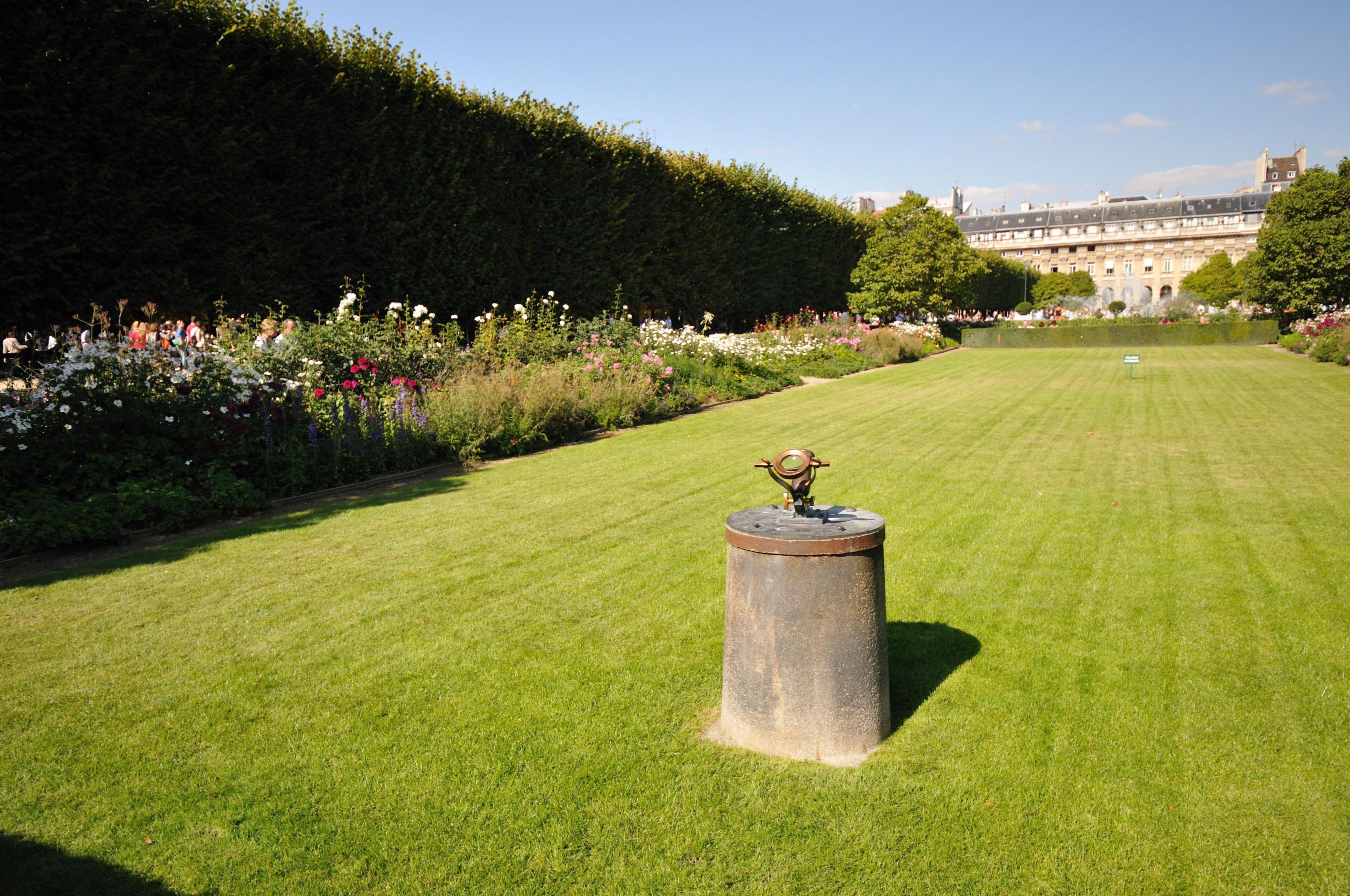
Le petit canon
© Blue Lion (ACZ, 2012)
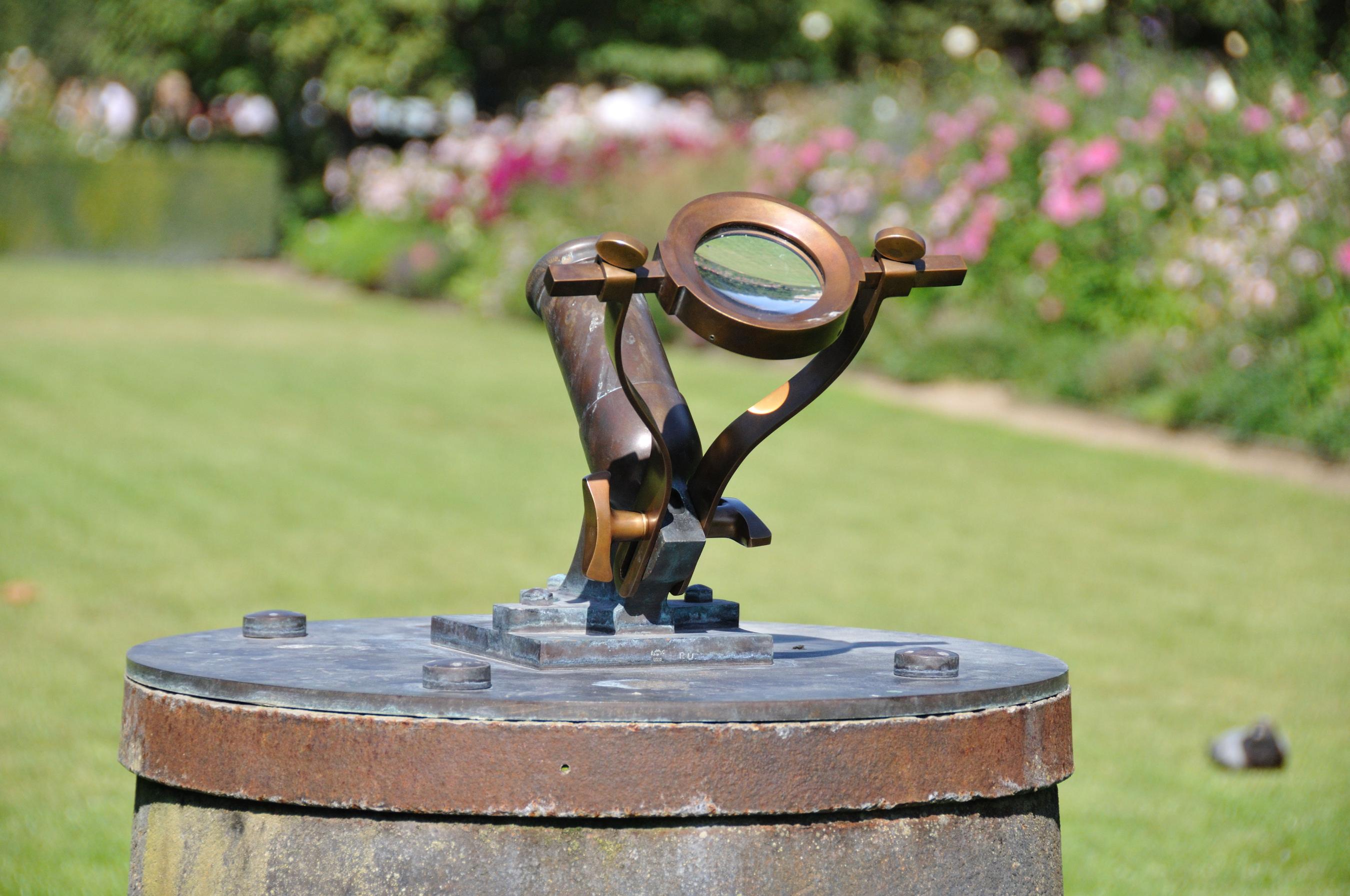
Le petit canon (detail)
© Blue Lion (ACZ, 2012)
When the Duke of Orléans built the galleries, one of the most consulted meridians of Paris on rue des Bons-Enfants had to be removed. The Duke of Orléans then promised to replace it with a solar cannon.It worked with a magnifying glass that triggered a cannon shot upon the passage of the sun. Thus Parisians could set their watches at noon. Having been stolen in 1998, the cannon was first replaced by a mute copy, which was made to function again in 2011.
In 1787 a splendid arena was built in the heart of the garden, half buried so as not to obstruct the beautiful view, accessible by underground corridors with shops, It hosted horse races in the beginning, then dancers at balls and carnivals, but also a concert hall to entertain the crowds. It seemed as though people never wanted to leave this magical place full of all kinds of distractions, pleasures and vices. A fire destroyed the arena in 1798.
In 1867, one of the pavilions of the Exposition Universelle was temporarily placed in the garden, in order to accommodate the many visitors.
The Galleries of the Palais-Royal
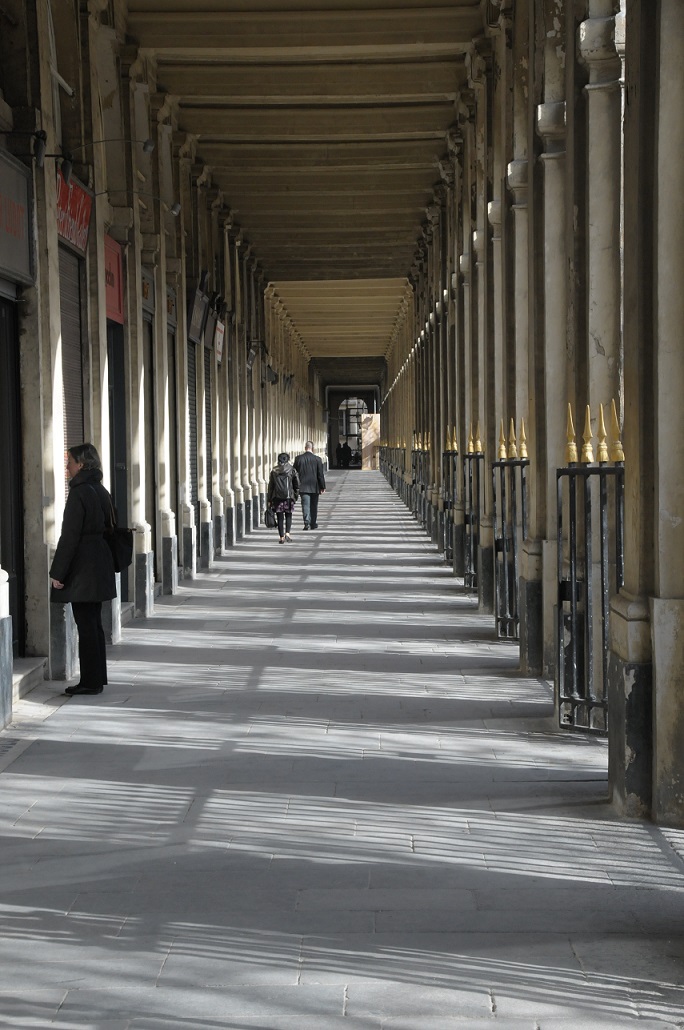
The galleries of the Palais-Royal
© Blue Lion (ACZ, 2011)
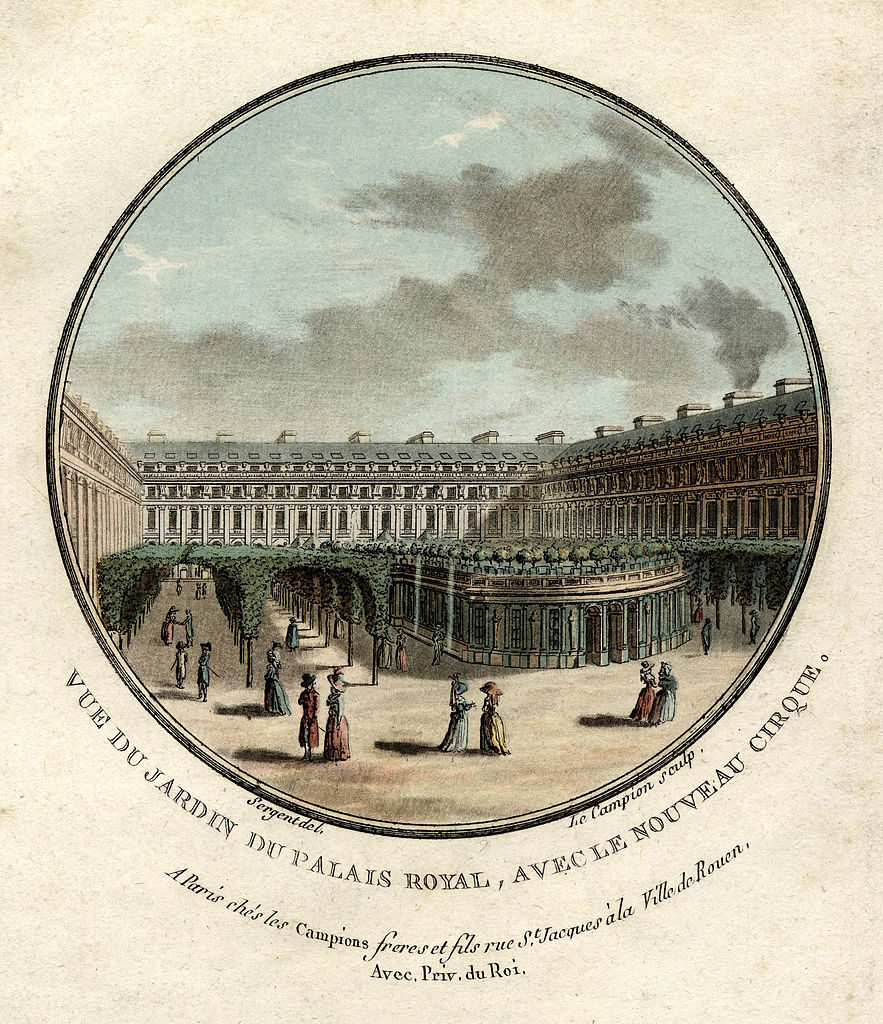
Le Campion - Sergent, 1807 Vue du jardin du Palais-Royal, avec le nouveau cirque, 1807
Brown University
The galleries surrounding the garden, the first "covered commercial galleries" made of wood, can be considered the prototype of the Parisian passageways about a hundred and fifty of which were subsequently built between 1800 and 1850. This architectural ensemble consists of three galleries: the first, immediately on your right is the Galerie de Valois, located on the eastern side of the palace; in the back of the garden it is extended by the Galerie de Beaujolais and, on the western side, by the Galerie de Montpensier. These are the names of the three sons of the Duke of Orleans, future Philippe-Égalité. Starting your tour through the Galerie de Valois, you discover, at number 177, the shop, formerly owned by the knife maker Badin, where Charlotte Corday, paying forty "sous" (1 French £ of the time = 20 sous, don't try to convert) for the dagger with which she killed Marat. The fact is mentioned in her trial proceedings on 13 July 1793. Then, at number 142, you find the Shiseido perfume shop, worth a visit for its murals inspired by the Empire style and reminiscent of the decor of the Grand Véfour restaurant, but also for its beautiful wrought iron staircase.
At the end of the Galerie Valois, on your left, the Galerie Beaujolais encloses the garden. The writer Colette resided at No. 9 rue de Beaujolais, at the back of the gallery, corresponding now to shops Nos. 92 and 93.
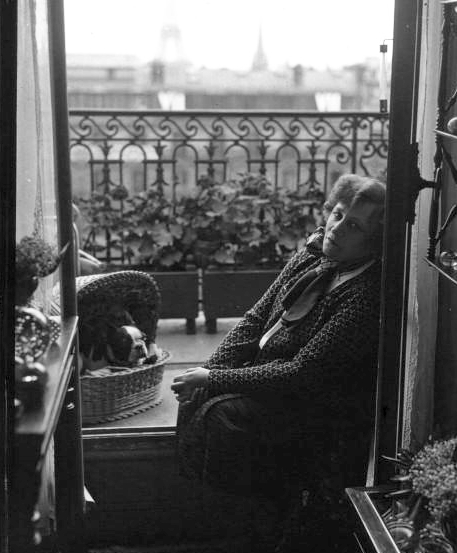
Colette in her apartment at the Palais-Royal, 1932
Bibliothèque nationale de France
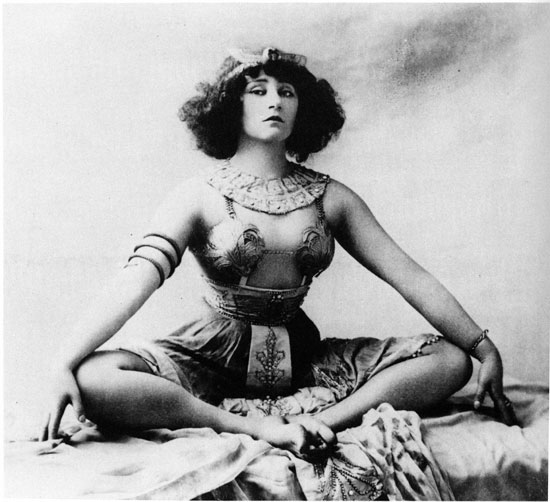
Léopold-Émile Reutlinger, Colette Rêve d'Égypte, 1907
Photo source: Wikimedia
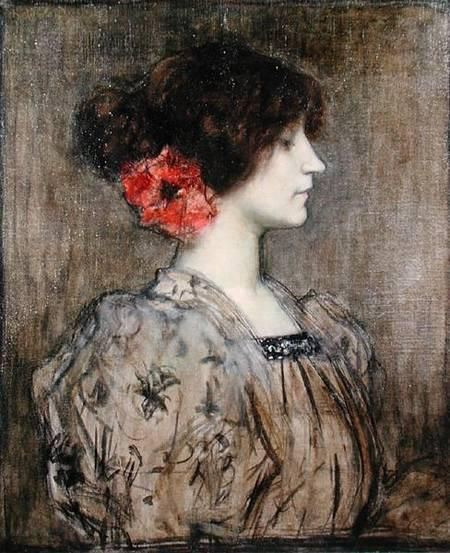
Jacques Ferdinand Humbert,
Portrait of Colette,
Oil on canvas, 1896.
She lived at the same address twice; first from 1927 to 1929, in an entresol which she called "my tunnel", and then from 1938 until her death in 1954, this time on the first floor. In her books De ma fenêtre (1942) or Trois... six... neuf (1949) the writer immortalizes the charm of the Palace. At the end of her life, she saw herself as the "soul of the Palais-Royal". Her apartment overlooked the Palais' gardens and, when when you raise your eyes to the balcony, you will discover a moon-shaped C, crisscrossed by a sun... or possibly a star? Day and night merge as in the writings of Colette and in the Kiosque des Noctambules (Kiosque of the Night-Owls, see) by Othoniel. The funeral of this modern woman was held in the courtyard of the Palais-Royal.
Back in time, today's shops were occupied by cafes, restaurants and gambling rooms, where Parisian Bohemians spent much of their time. The only restaurant that has stood the test of time is the Grand Véfour, on the left, at 17 rue de Beaujolais. It was opened in 1820 by Philippe-Égalité's former chef, Jean Véfour, replacing the Café de Chartres, and became a very fashionable place frequented by revolutionaries such as Robespierre, Danton, Marat, Desmoulins and writers like Restif de Bretonne. Here Napoleon met Josephine Beauharnais. Further in the 19th century, the restaurant was particularly popular with writers such as Madame de Staël, Gustave Flaubert, Alphonse de Lamartine, Edmond de Goncourt, Victor Hugo, Honoré de Balzac, Émile Zola and George Sand. In the 20th century Colette and Jean Cocteau were daily habitués; Jean-Paul Sartre, Simone de Beauvoir, André Malraux, Louis Aragon, Jean Giraudoux and Elsa Triolet were also regular clients. The menus were designed by Cocteau himself. Personalities from the entertainment world, like Juliette Greco, Louis Jouvet and Marcel Pagnol frequented the restaurant too. A glance through the windows shows you the Empire-style delicate and sumptuous decor that draws its inspiration from the new excavations carried out at Pompeij and Herculaneum during the era of Napoleon.
Jean Cocteau, Colette's friend, was also her neighbor. In 1940, during the German occupation, this artist, poet, writer, director of the famous Beauty and the Beast (filmed in 1946) and author of Les enfants terribles (published in 1929), moves into a mezzanine on No. 36 rue de Montpensier.
If you leave the Palais-Royal at the Grand Véfour and turn left, you will immediately see the Théâtre du Palais-Royal, originally the Théâtre Beaujolais, built by architect Victor Louis and opened in 1784 as a puppet theater under the protection of Count Beaujolais, hence its name. It was also known as the Théâtre des Petits Comédiens (Theater of the little actors). It has since changed.
Return to the Galerie de Montpensier, No. 24: Didier Ludot's store is the "Holy Grail" of vintage fashion, where high fashion clothes of the sixties and seventies attract clients like Madonna, Nicole Kidman and Kate Moss.
The French Revolution at the Palais Royal

Pierre-Gabriel Berthault and Jean-Louis Prieur, Motion made at the Palais-Royal by Camille Desmoulins, July 12, 1789,
etching, 1802.
As the Duke of Orleans had opened the Palace gardens to the public, it became a popular gathering place. t the beginning of the French Revolution, the agitation and riots that led to the the storming of the Bastille originated precisely here. This is also the place where, sometime later, women gathered and marched on to Versailles demanding bread from Queen Marie Antoinette, The latter is said to have carelessly responded saying: "if they have no bread, let them eat cake". Then, on July 12, 1789, it was at a table at the cafe Foy (No, 50-60 of the Monpensier gallery), located under the arcades, that Camille Desmoulins held his famous speech urging the people strolling by to wear the sign of the green leaf, symbol of hope.
Filming at the Palais-Royal
The Palais-Royal is also one of the busiest places in Paris for shooting movies. There are at least fifteen known ones, but it is likely that the number is much higher. Among those shot at the Palais were:
- Charade (1963) by Stanley Donen with Cary Grant and Audrey Hepburn
- Interview with a Vampire (1994) by Neil Jordan, starring Brad Pitt, Tom Cruise and Antonio Banderas
- Men, women, instruction manual (1996) by Claude Lelouch
- The Da Vinci Code (2006) by Ron Howard, starring Tom Hanks
- Paris (2008) by Cédric Klapisch, starring Juliette Binoche and Fabrice Luchini
- The Tourist (2010) by Florian Henckel von Donnersmarck, starring Johnny Depp and Angelina
- Marathon Man (1976) by John Schlesinger, with Dustin Hoffman and Laurence Olivier
- That Obscure Object of Desire (1977) by Luis Buñuel, starring Fernando Rey and Carole Bouquet
